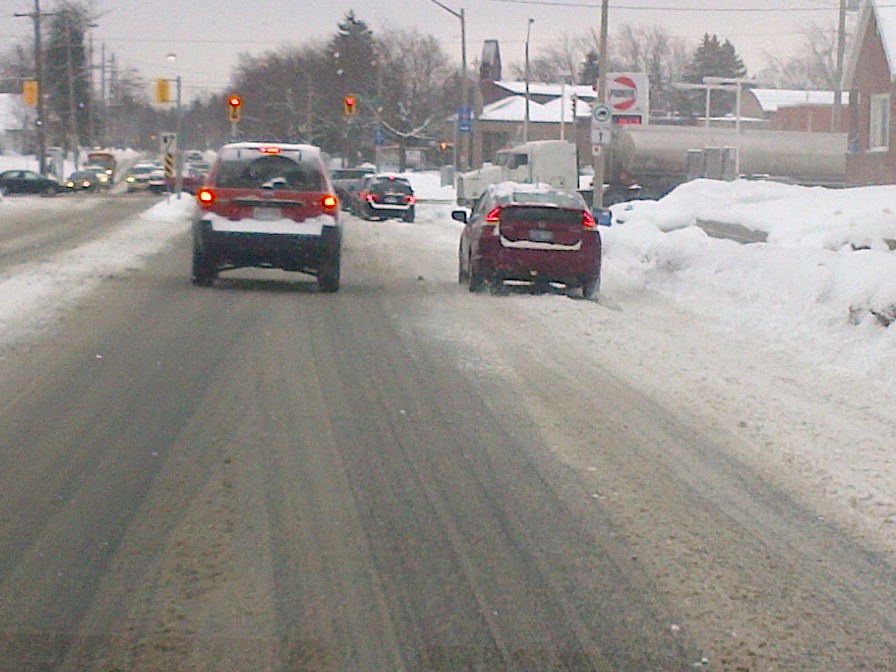The key points to stopping on icy roads
 As written for The Insurance Hunters. Please visit their blog.
As written for The Insurance Hunters. Please visit their blog.
In today’s society it always seems like we’re trying to get somewhere. It’s a go – go – go mentality for many people. Even though we may seem to be busy or in a hurry, there are times we need to slow down and stop. This is particularly true when it comes to driving. On normal road conditions it can be easy enough, but what happens when the roads become slippery with rain, snow or the ever so dangerous – ice?
One thing to remember is that speed limits are set for ideal conditions. Icy road conditions are not normal and should never be treated as such. Maintaining control of your vehicle is far better than regaining control. This means you never lost control of it. Proactive thinking is one of the best ways to maintain control of your vehicle.
The first thing to remember while driving on icy roads is to do things gradually. This includes gradually easing off the accelerator, gradually applying the brakes and gradually steering. Sudden changes on an icy road means skids. And by the way, you can skid or slide without touching your brakes. A sudden turn of the steering wheel may cause your vehicle to understeer – which has the vehicle going straight even though the wheels are turned.
Since we actually drive with our eyes, keep looking well ahead of where you currently are on the road. If you spot red traffic lights ahead or brake lights well ahead, and not from the vehicle immediately ahead of you, begin slowing down. You know you’re going to need to slow down eventually, so why wait, especially on slippery road surfaces.
Predicting black ice can also give you a jump on braking safely. Shaded road surfaces, on and under bridges are areas which freeze much sooner than other areas and stay frozen well after the sun has risen. This is normally where black ice is formed. Look for black shiny road surfaces and reduce speed and avoid sudden changes of speed and direction in those areas.
If you do begin to slide while braking on icy roads, ease slightly off your brakes to allow the wheels to rotate once again. Look well ahead and aim for open space. This may mean a driveway, parking lot or shoulder. Staring at the vehicle ahead of you may mean that’s where you’ll end up. If you do skid, try this; bit.ly/ffyrIK
I remember as kid my dad would pump the brake to stop on slippery roads. It would get us stopped, but it would take a very long time to do so. A better solutions is the continuously add pressure to your brakes but begin earlier than you would on dry road surfaces. This continuous pressure will allow your wheels to rotate and allow your tires to continuously grip the road. Don’t rely upon your anti-lock brakes to stop you either. On icy roads they have a difficult time gripping as well. Early braking is still the key to stopping safely on icy roads.
**Have a quick listen to this short episode of the “Speed Bumps” podcast as it discusses how to correctly use anti-lock brakes!

[…] Source: The key points to stopping on icy roads | The Safe Driver […]
You didn’t mention that while winter tires aren’t mandatory except in Quebec, every vehicle in Canada should be equipped with either dedicated winter tires or in light snow areas ALL WEATHER…not all season tires are a must.